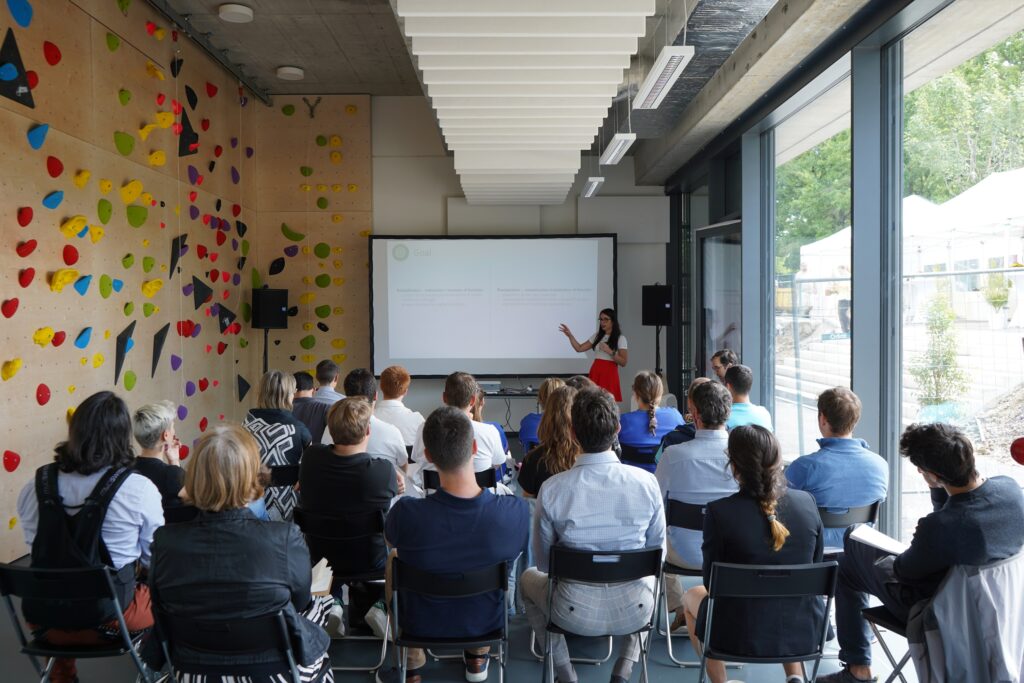A 5-pillar project

Subproject 1: Specification & Evaluation of the New Neurorehabilitation Model
SP1 addresses the main limitations of the current neurorehabilitation system: Patient care is organized in segregated phases, with limited home treatment. SP1 introduces a paradigm change in the neurorehabilitation system, based on the notion of continuity of care, allowing seamless transition between rehabilitation phases, reinforcing outpatients management, also via telerehabilitation solutions.
The objectives of SP1 defines the integrative model based on 4 pillars:
- a clinical perspective, planning a continuity of the therapeutic programs along the rehabilitation journey;
- an economic perspective, unifying the notion of costs, with the different steps being reimbursed by homogeneous regimes between public and private payers;
- a data flow perspective, implementing a system able to integrate clinical and economic data across the different phases;
- the patient’s perspective, maximizing awareness about their rehabilitation journey, especially once discharged from hospital.
The planned results of SP1 include a novel, patient-centric framework of neurorehabilitation along the continuum of care, and validated against the current model, for its clinical and socio-economic value. This will result in different implementation guidelines. To guarantee adoption, the model will be ratified by a panel of relevant stakeholders, which will include patients’ associations, scientific societies, groups of healthcare providers.
Subproject 2: Therapeutic programs
The SP2 mission s to identify, implement and validate novel approaches for neurorehabilitation of upper-limb, lower-limb, and cognitive deficits due to acquired brain injury and spinal cord injury. SP2 will develop the therapeutic programs for the new continuum of care model, enriching neurorehabilitation with Digital Therapeutics (DTx).
First, a clinical expert panel will identify evidence-based Neurorehabilitation approaches and measures for each of the three functional domains and various levels of impairment, and highlight current limitations in terms of evidence and feasibility. The needs and expectations of patients and clinicians will be integrated and the proposed solutions will be validated with the relevant Swiss and international scientific societies via ad-hoc workshops and opinion papers.
Subsequently, the clinical specifications will be used to develop, optimize, and implement the novel programs together with implementation partners. This phase will yield DTx fully compatible with the data infrastructure and ready for clinical validation. These programs will then undergo iterative assessment, providing measures of feasibility, acceptance and efficacy in multi-site trials.
SP2 will perform the clinical assessment of the current and new SwissNeurorehab model defined by SP1 by recruiting up to 3200 patients.
Subproject 3: Data infrastructure and capture
The SP3 mission is to build a secure and privacy-preserving data infrastructure to exchange different types of neurorehabilitation-related data and analyze/visualize the outcomes for optimal decision making. To support a continuum of care, clinical and patient care clinical pathways will be modelled and implemented with the integration of personal data such as sensor and patient-reported outcomes into the platform.
The main outcome will be an interoperable platform for data capture, exchange and analysis of neurorehabilitation-related data among hospitals, clinics, private therapists, and patients, including shared care/treatment plans along the continuum of care. This platform will enable a coherent and informed follow-up of patients across organizations, including not only electronic patient records, but also data generated by interconnected digital therapeutics devices and patient-reported outcomes.
Subproject 4: Socio-economics
The SP4 mission is to provide input to an overall evaluation of the new SwissNeuroRehab model defined in SP1, offering four outcomes:
- a descriptive monitoring of the costs of implementing the new neurorehabilitation model;
- a cost-effectiveness and cost-utility analysis of the new neurorehabilitation model;
- a financial plan for take-up and sustainability of reimbursement of the new neurorehabilitation model, including telerehabilitation;
- a qualitative analysis of the organisational impacts of the new neurorehabilitation model.
In a first step, a relevant set of outcomes (e.g. condition-specific and generic patient-reported outcomes), healthcare use, and associated costs measured either retrospectively or prospectively are defined and collected in coordination with SP1 and SP2. The analysis of these data will form the basis of the new reimbursement model in order to foster take-up and sustainability for providers, public healthcare systems, and private insurance companies.
In the final part, a qualitative analysis including an organizational impact map for health technologies, as well as focus groups based on the perspectives of patients/carers, healthcare professionals, and financing partners will generate important insights into the acceptance and perceived benefits of the new patient-centered, home therapy scheme.
Subproject 5: Education and training
The SP5 mission is to build the best educational solutions and to develop an organic, evolving curricula for neurorehabilitation, focusing on the standard of care and considering validated digital technologies. The proposed training will consistent with the Swiss training system, integrating current and future courses. It will pay particular attention to address the needs of the three levels of a health system:
- the macro-system that includes decision makers, politicians, federal agencies, and insurance systems,
- the meso-system that includes all healthcare professionals (nurses, physical and occupational therapists, neuropsychologists, physicians, speech therapists),
- the micro-system that includes patients, caregivers, and other helpers (e.g., stewardship staff, kitchens staff, technical support)
SP5 will implement a dissemination strategy to consolidate the foundations of neurorehabilitation as a critical service for the Swiss society. The strategy translates into national congresses for all stakeholders (patients’ associations, healthcare professionals, insurers, and policy makers) and workshops for continuous education of patients and caregivers.
To ensure the successful integration of praxis in neurorehabilitation, it is essential to train all stakeholders involved in the health system: from patients to policy makers, including all institutions in-between with their professionals and leaders. The pedagogical engineering proposed will bring together researchers, practitioners (including next generation), and beneficiaries.